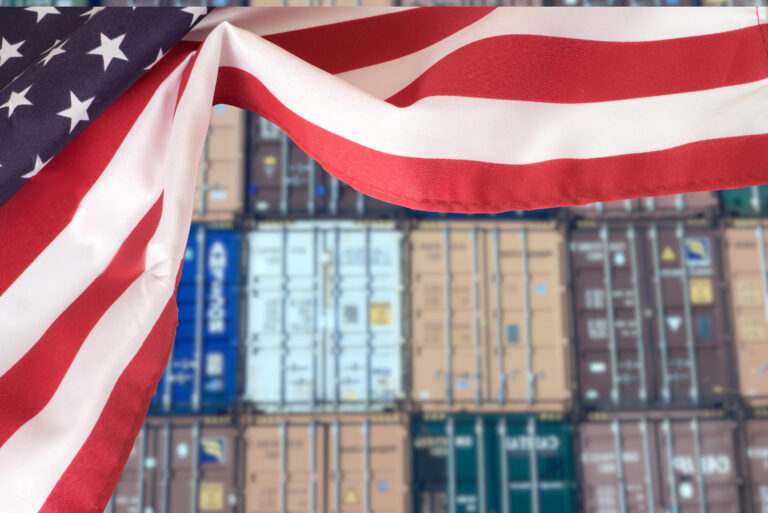International treaties promote industrial and economical development of nations under international law.
When discussing the free trade agreements (FTAs), it is inferred that their goal is to establish transactional regulations and remove obstacles such as tariffs and taxes in import and export processes.
What benefits can industrial development obtain from trade agreements?
According to the Federal government of Mexico1, there are several benefits of signing trade treaties, including:
- Higher competitiveness and diversification.
- Access to larger markets.
- Trade barriers removal.
- Technological exchange.
Nowadays, Mexico has 14 trade agreements1 with countries worldwide, allowing access to markets that are hard to reach, such as Asian or Middle Eastern markets.
This has been accomplished with international certifications for fair trade2 of organic products and federal and technical-religious standards, like Halal3 and Kosher4 certifications.
USMCA’s contribution to economic growth in Mexico, the United States, and Canada
The North American Free Trade Agreement (NAFTA) was signed in 1992 between Mexico, the United States, and Canada but went into effect in 1994. It is one of the oldest treaties of these countries.
But on November 30, 20185, new conditions and benefits were proposed. The United States-Mexico-Canada Agreement (USMCA) replaced NAFTA. This agreement entered into force on June 1, 2020, and will remain in effect for 16 years, undergoing revisions every six years.
NAFTA’s goal was to encourage international treaties in North America, reducing transactional hindrances. In the beginning, all parties benefited, but in the long term, it resulted in job losses. Therefore, USMCA’s key changes included regulations to protect workers.
Another transition was implementing regulations in the automotive sector. In the past, NAFTA stipulated that to get tariff exemption benefits, 62.5% of production6 must be done in countries that have signed the agreement; meanwhile, USMCA increased this up to 75%.
However, NAFTA and USMCA differ greatly; the latter has 34 articles, compared to the 22 that the former had. The document’s extension addresses the addition of new guidelines on relevant issues for the development of 21st century industry, such as:
- SMEs.
- E-commerce.
- Telecommunications.
- Competitiveness.
- Anti-corruption strategies.
By elaborating on measures to tackle these issues, the new trade agreement has been advantageous for the three nations, providing stability and setting clear rules for commercial transactions.
USMCA: how it impacts industrial development
Industrial space development gained an incredible historic boost related to this trade agreement and the conditions that arose from the pandemic.
As data shown by Newmark, 10 years ago, the average occupancy was 15 million sq ft7, with Class A industrial buildings holding the greatest demand. By 2021, leasing such spaces increased to 31 million sq ft, in other words, a growth of 108%.
The treaty also helped promote trade activity worth more than US$1.2 trillion8 between the member nations.
Manufacturing processes saw positive results in cost reductions since many of the products assembled in North America came with imported parts from other countries. Before signing the agreement, the added value in each process costs much more.
Likewise, production was optimized by simplifying supply chains, which is why companies can currently strive for higher productivity levels.
Industrial real estate is another sector that has seen positive outcomes due to the FTA, attracting new tenants and increasing foreign direct investment (FDI) percentage. This trend has led to optimistic projections concerning stability in the manufacturing sector and the consolidation of logistics and distribution chains.
At Advance Real Estate, we provide national and foreign companies with industrial spaces adapted to industrial development challenges in 2023. Visit us and find a new strategic location for running your company’s operations.
Information source:
- www.gob.mx/agricultura/…/tratados-comerciales-un-punto-a-favor-de-mexico
- comerciojusto.org/como-puedo-reconocer-un-producto-de-comercio-justo
- https://www.institutohalal.com/certificacion/#:~:text=Un%20certificado%20Halal%20es%20un%20documento%20emitido%20por,cadena%20alimentaria%2C%20desde%20la%20granja%20hasta%20el%20plato.
- https://www.normas-iso.com/certificado-kosher/
- mundi.io/exportacion/que-es-el-t-mec
- zarateabogados.com/2021/…/diferencias-entre-el-tlcan-y-t-mec
- inmobiliare.com/t-mec-impulso-el-desarrollo-de-espacios-industriales-en-mexico
- inmobiliare.com/beneficios-del-t-mec-en-el-sector-industrial
- advance-realestate.com/adblog/espacios-industriales-e-inversion-extranjera-en-mexico

